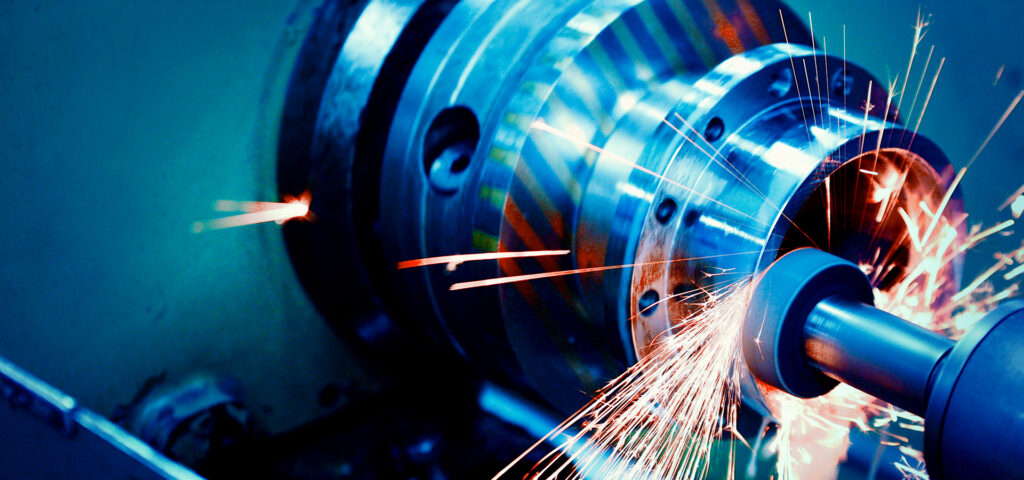INDUSTRY UPGRADE, Part 2:
How to create a better cost-benefit analysis
This is INDUSTRY UPGRADE: a blog made for manufacturers. This series equips manufacturers with helpful tools for investing in new equipment, planning smarter, and facing challenges like labor shortages and rising material costs.
In Part 2: How to Create a Cost-Benefit Analysis, you will learn:
- How CBAs can help you make smarter decisions.
- The best practices for creating CBAs.
- How to create your own CBA in 3 easy steps.
Keep scrolling to read Part 2, or click here to get in touch with a financial expert with manufacturing expertise.
To buy or not to buy? A Cost-Benefit Analysis can help you decide.

It may sound like a relatively simple, binary decision. But, for manufacturers, the process of deciding when, how and whether to invest in new equipment is complex and high stakes, with numerous factors to consider and consequences that can impact a business for years to come.
A cost-benefit analysis (CBA) brings some much-needed structure and clarity to the process. When considering an investment—or making nearly any business decision—this tool provides a formal space where you can compare the costs and benefits of the investment, then determine how it will likely impact your business.
It’s a simple tool, but a thoughtfully constructed CBA can help you directly compare your options, identify factors that you may have otherwise overlooked, and make data-driven decisions.
As your business faces challenges like labor shortages, rising material costs and emerging technologies, there are more and more factors to weigh in every decision you make. Well-crafted CBAs can make all that complexity feel more manageable.
Let’s learn how to make one.
Best practices: how to make and use a Cost-Benefit Analysis

A cost-benefit analysis can help you make smarter decisions, but these tools only work when used correctly. As you begin to create your CBA, keep these best practices in mind:
- Assign a monetary value to every cost and benefit. This may seem unnatural for some items on your list, but when making a CBA every item must have a value. Assigning monetary values allows you to make direct, quantitative comparisons between your costs and benefits.
- Double-check your quantifications (the monetary value you assigned to each item) and any forecasts of future events included in your CBA. A miscalculation here could affect the overall results.
- Think long-term. Consider the full lifespan of your equipment. How will its long-term usage affect your business? Are there industry trends emerging that may make it more or less valuable in the future?
- Think holistically. Knowing that your manufacturing operation is a complex system where one component impacts another, consider not only the value of the individual equipment but how it will impact the system at large. For example, a new technology may cut down your production costs, but if it takes up too much floorspace, the space you need for other machines, it may not be worth it.
- Create multiple CBAs. One of the most valuable features of CBAs is that they allow you to directly compare your options. Create a CBA for each option that you are considering, then compare their values to determine the best one.
- Bring in a knowledgeable, trusted third party to mediate the process. A third-party expert can bring objectivity to the process, helping you assign appropriate monetary values to your costs and benefits. They will also ensure that you consider every possible factor and help you work through the longer-term costs and benefits, which may involve more complicated calculations, forecasting and industry knowledge. Eliminating bias in the CBA process ensures that your results are accurate, objective and useful. Contact our team to get in touch with a financial expert who has helped numerous manufacturing businesses navigate complex decisions.
Creating a cost-benefit analysis: 3 easy steps

Now that you’ve learned the best practices of creating a CBA, it’s time to make your own.
Step 1: Make a list of all costs associated with your investment.
This includes many factors beyond the actual price tag of the equipment. As you make your list, consider the downtime required to install the equipment, the training of your staff, the opportunities you might be missing from purchasing this equipment vs. investing your money differently, and any direct or indirect costs.
Some of the costs commonly associated with purchasing new equipment include:
- Direct costs, such as the purchase of equipment and overhead.
- Any downtime or costs associated with installation and staff training. Consider how downtime might impact other orders and relationships with customers.
- If the new equipment takes up significant room, it may leave less room for other components and potential new investments.
- Opportunity costs, such as alternative investments that could have been made with the resources invested in this equipment.
- Risks, such as regulatory and safety.
- Environmental impact.
Once you’ve made your list, assign a monetary value to each item, including those items, like time and convenience, that don’t naturally have a monetary value.
Remember, it’s important to get these values right, as they can impact the overall results of your CBA. Consider hiring a third party to eliminate bias throughout the process and ensure you aren’t overlooking important factors.
Step 2: Make a list of all benefits associated with your investment.
In a separate document, create a list of all the benefits associated with your investment. Just like you did in Step 1, focus on the tangibles and intangibles, the present and future benefits, and assign an appropriate monetary value to each one.
Some common benefits of investing in new equipment are:
- If you invest in technology that’s digitally integrated, you will now be able to monitor your equipment’s performance and make data-driven decisions. This could help you make your operation more efficient in the future.
- New capabilities, allowing you to take on new projects down the road and earn more revenue.
- Increased efficiency for future projects.
- Better employee morale, more satisfied customers, a reduced environmental impact, and other intangibles.
Step 3: Analyze, iterate and develop additional Cost-Benefit Analysis.
Now that you’ve determined your costs and benefits—and assigned a monetary value to each one—you’re ready to make a direct comparison!
First, add all of the monetary values of your benefits. Then, add all the monetary values of your costs. Finally, subtract the sum of your costs from your benefits.
Decision Value = Total Benefit Sum – Total Cost Sum
If the number you’re left with (the Decision Value) is positive, then the benefits outweigh the costs. If it’s negative, then the costs outweigh the benefits. Now we’re beginning to see the overall value of our potential choice—but we still have a little more work to do until we arrive at a final decision.
Before we judge the results of your CBA, let’s go back and review your costs and benefits. Where can you tweak the formula? How can you reduce costs and increase benefits?
For example, you may be able to reduce the cost of downtime during employee training by training half of your staff during the first part of a day—while the other half continues working—and then training the other half later that same day, so your operation continues running throughout. Get creative! These solutions can impact your final Decision Value.
Once you feel confident that you’ve maximized the benefits and minimized the costs within your CBA, take another look at your Decision Value. If it’s positive, meaning the benefits outweigh the costs, then you may want to move forward with the decision. If it’s negative, then the costs outweigh the benefits, and you should probably explore other options.
However, before you make any final decision, you should create additional CBAs for other potential options and compare their Decision Values. As long as you’ve assigned the right monetary values to each item and considered all factors for each option, the option with the highest possible Decision Value is projected to be the best possible option.
Now, as you move forward, you can feel confident knowing that you’ve considered a wide range of possibilities, weighed their many costs and benefits, and are making your decision based on data. It feels good to know the numbers are on your side.

Keep learning. Keep upgrading.
Thanks for reading Part 2 of INDUSTRY UPGRADE! In Part 1, which you can read here, we covered how manufacturers can assess their needs, better-understand their finances and begin planning new investments. In Part 3, we take a look at the best practices of financing new investments.
Financial guidance, made for manufacturers.
At Dugan + Lopatka, our team of financial experts has served manufacturers in the Chicagoland area for more than four decades. We provide a comprehensive range of financial guidance and accounting services to help you overcome emerging challenges, maximize your profitability, plan successful investments, and strategize for the future. Contact our team to learn more.
